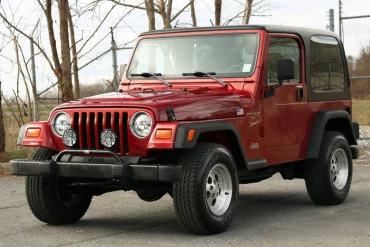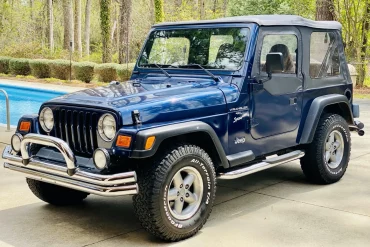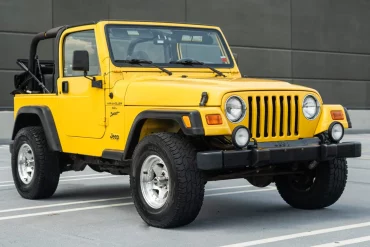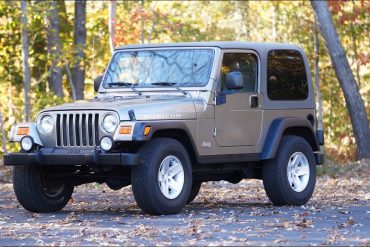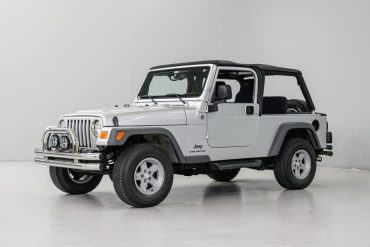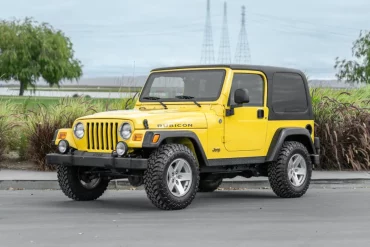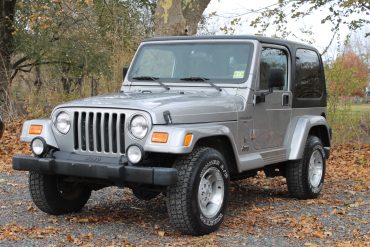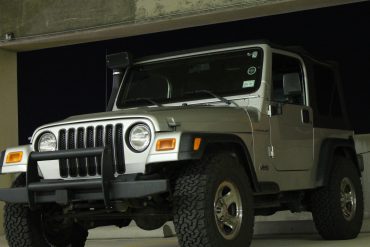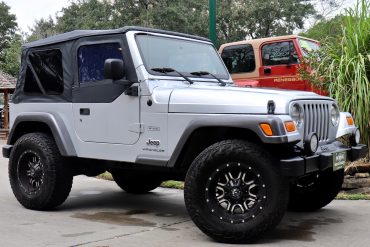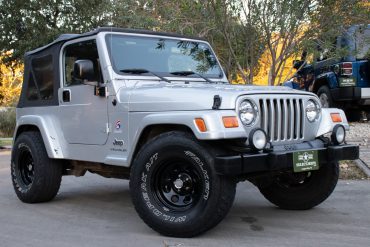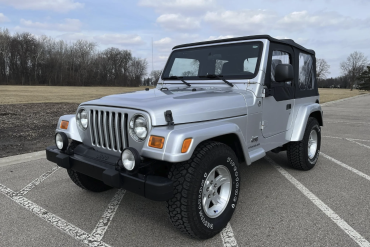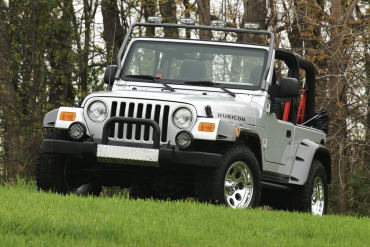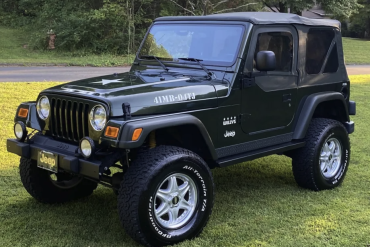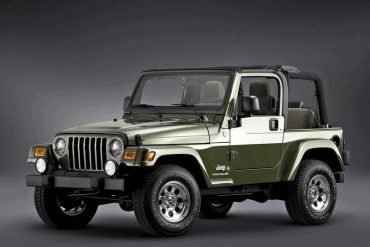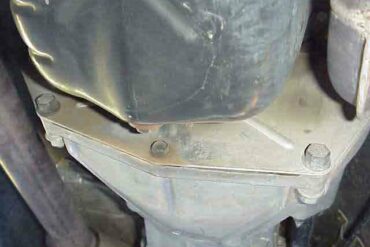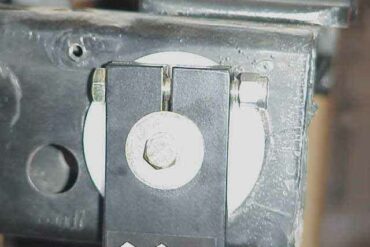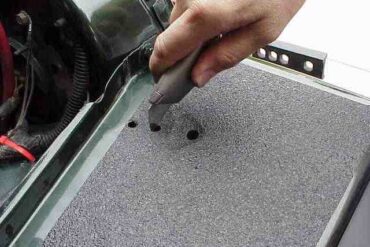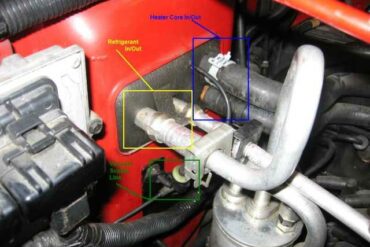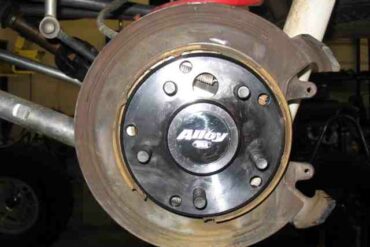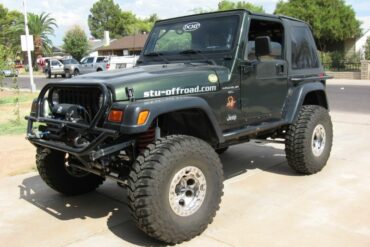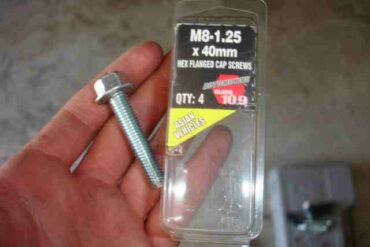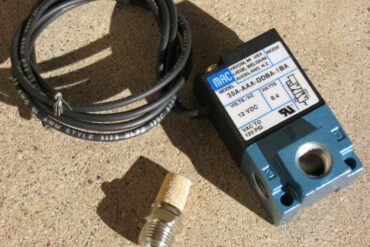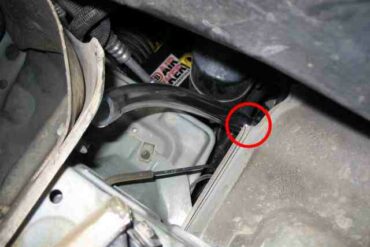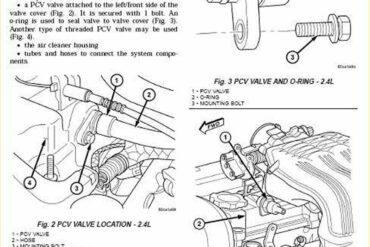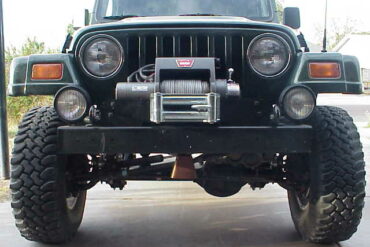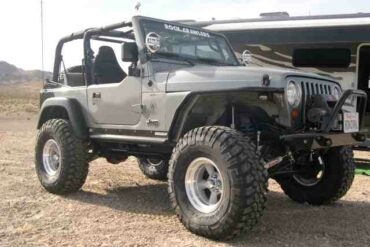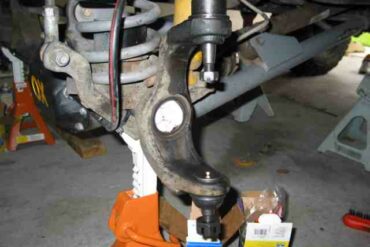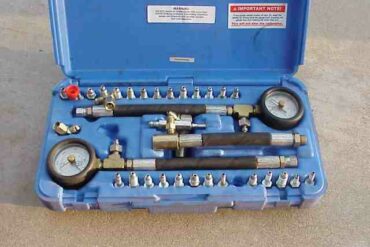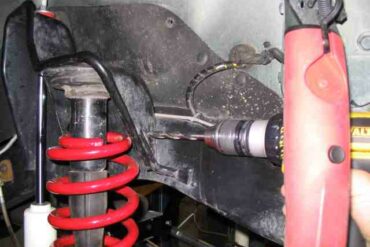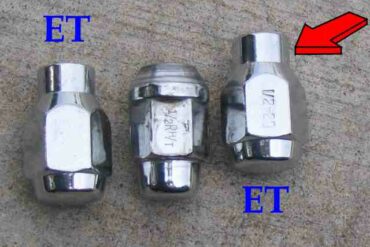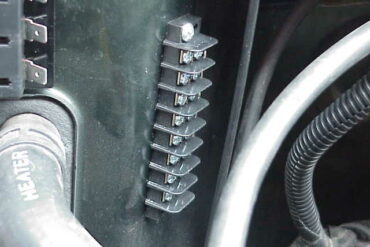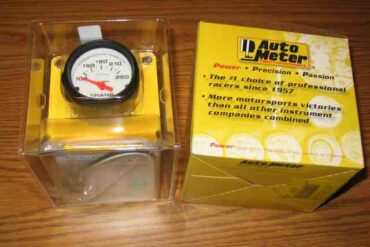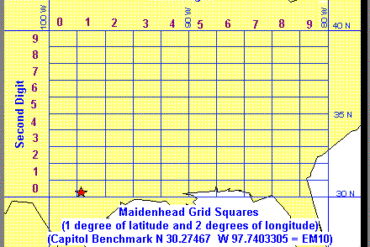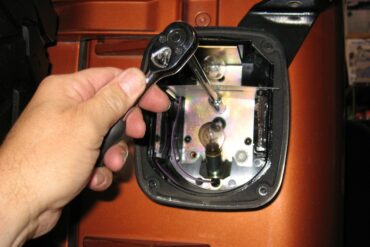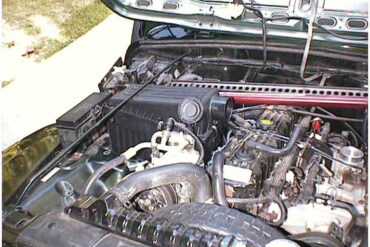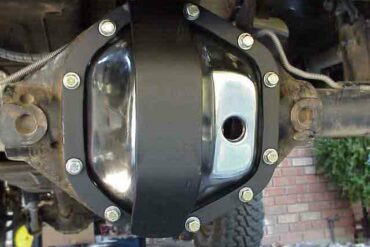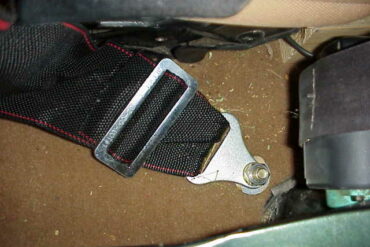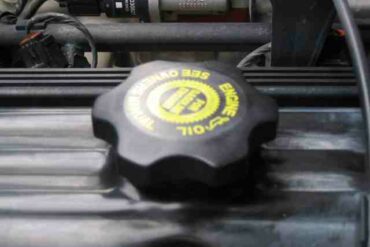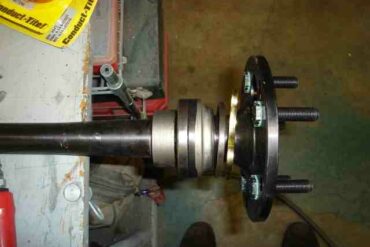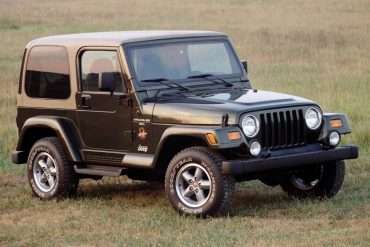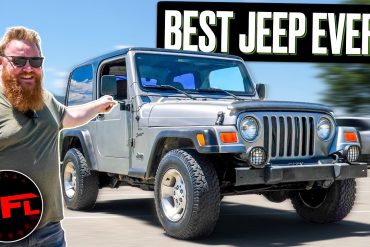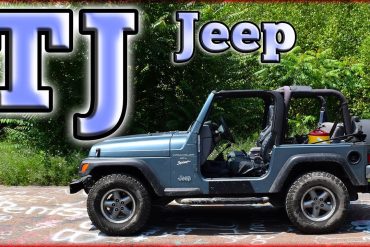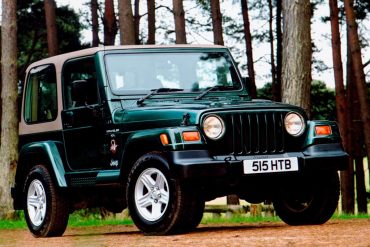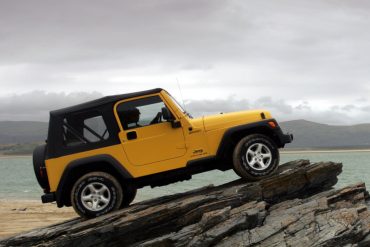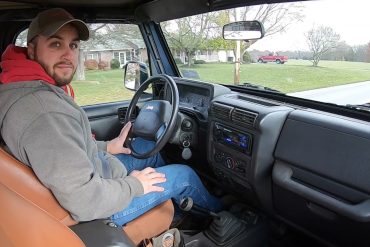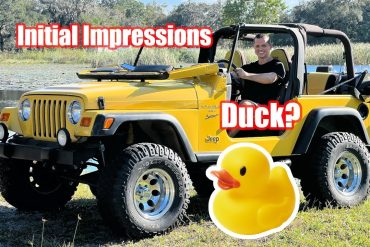The 1997 Jeep Wrangler: An In-Depth Exploration The 1997 Jeep Wrangler marked a significant redesign and evolution in the history of the Jeep brand, ushering in the TJ generation. This...
Jeep "TJ" Wrangler
1997 - 2006 / Second Generation
Model-Year Guides / Technical Information / Pics & Videos
The Jeep "TJ" Wrangler, introduced in 1997, marked a significant redesign from its predecessor, featuring round headlights, coil-spring suspension, and improved interior comfort. Renowned for its rugged off-road capabilities and classic Jeep styling, the TJ generation solidified the Wrangler's status as an icon of adventure and durability.
Jeep TJ Wrangler Guide
TJ Overview / Model Year Guides / TJ Research / TJ Pics & Videos / Everything Else
Looking to go deep on the Jeep TJ Wrangler? No problem - our comprehensive Jeep WL guide covers everything that current and prospective owners need to know about the second-generation Wrangler.
The Evolution of Excellence: The The Second Generation Jeep Wrangler "TJ".
The second-generation Jeep Wrangler, known as the TJ, represents a pivotal chapter in Jeep’s storied history. Introduced in 1997 and produced until 2006, the TJ Wrangler brought significant updates and innovations that enhanced its off-road capabilities and comfort while maintaining the iconic Jeep aesthetic. This comprehensive analysis delves into the history, updates, special models, engine specifications, and the overall importance of the Jeep TJ Wrangler.
Historical Context
The Jeep Wrangler’s lineage dates back to the original Willys MB of World War II, which became an icon of ruggedness and reliability. The first-generation YJ Wrangler, introduced in 1987, had a significant departure from the classic round headlights, opting instead for square ones, which was met with mixed reactions from Jeep enthusiasts. With the launch of the TJ Wrangler in 1997, Jeep aimed to reconnect with its heritage while incorporating modern engineering advancements.
Design and Styling
The TJ Wrangler marked a return to Jeep’s classic design elements:
Round Headlights: A nod to the original Jeeps, this design choice was well-received by enthusiasts.
Seven-Slot Grille: Maintaining the traditional Jeep front-end styling.
Boxy Shape: The TJ retained the rugged, utilitarian look with its boxy shape and exposed hinges.
Removable Doors and Fold-Down Windshield: Features that continued from previous generations, emphasizing versatility and the open-air experience.
Chassis and Suspension
One of the most significant changes in the TJ was the introduction of the Quadra-Coil suspension system:
Coil Springs: Replacing the leaf springs used in the YJ, the coil-spring suspension provided a smoother ride and better articulation off-road.
Solid Axles: Both front and rear axles remained solid, ensuring durability and strength for off-road adventures.
Engine Options and Performance
The TJ Wrangler offered several engine options throughout its production run:
2.5-liter Inline-4: Initially offered, producing 120 horsepower and 140 lb-ft of torque. This engine was paired with a five-speed manual transmission and was suitable for light off-road use and daily driving.
4.0-liter Inline-6: The most popular engine choice, delivering 181 horsepower (later increased to 190) and 222 lb-ft of torque. Known for its durability and torque, this engine was ideal for off-road driving. It was available with either a five-speed manual transmission or a three-speed automatic (later updated to a four-speed automatic).
The 2.5-liter inline-four that dated back to former Jeep owner American Motors Corporation was standard fare through 2002, when it was replaced by a Chrysler 2.4-liter inline-four. Both engines are robust, but not quick even given the TJ’s light curb weight. The later 2.4-liter put out 147 horsepower and was arguably the smoothest engine offered in the TJ. Most Wranglers left the Toledo, Ohio, assembly plant with Jeep’s long-running 4.0-liter inline-six, which topped out at 181 horsepower (later with 190 hp). The straight-six is legendary for its durability as well as its low-end torque.
Through 2002, the Wrangler could either be had with a five-speed manual transmission or a three-speed automatic. Two versions of the manual were available, both of which generally have a good reputation for strength. The three-speed automatic’s lack of an overdrive gear hurts drivability and fuel economy. For 2003, Jeep dropped the three-speed in favor of a far better four-speed automatic. A 6-speed manual became standard fare with both engines in 2005, and it can keep highway revs slightly lower for more comfortable cruising.
Interior and Comfort
The TJ Wrangler improved significantly in terms of interior comfort and convenience:
Improved Seating: Better-padded seats with more adjustment options.
Enhanced Instrument Panel: A redesigned dashboard with improved ergonomics and functionality.
Optional Air Conditioning: Available for added comfort.
Hard and Soft Tops: Offered with both hard and soft top options, allowing for versatility in different weather conditions.
Special Models and Editions
Throughout its long run, the Wrangler came in a variety of trim levels. The base version — and the only way you’ll find a four-cylinder engine — was called SE. The Sport was traditionally the mid-level model (though it was pushed slightly upmarket by a more value-oriented Wrangler X trim that arrived in 2002), and the Sahara had special interior and exterior trim plus more features. The Rubicon off-roader arrived for 2003. Unlimited models came in a single trim level. Jeep also offered numerous special editions, most of them arriving later in the TJ’s production run.
No TJ is luxurious, though base SEs can be downright spartan. Many left the factory without air conditioning or a radio, and the earliest ones could even be had without power steering or a back seat. “Half” and “full” door options were available with the standard soft top; the former is smaller and offers more of a wind-in-your-face feel, while the latter has a roll-up glass window and is far more secure. A composite hardtop with glass windows was optional on every trim level, and it came in either tan or black and could be upgraded with tinted glass and a heated rear window.
Throughout its production run, the TJ Wrangler saw several special models and limited editions:
Sahara: Featured upgraded interior materials, body-colored fender flares, and additional convenience features.
Rubicon: Introduced in 2003, designed for serious off-road enthusiasts with Dana 44 axles, Rock-Trac transfer case, and locking differentials.
Unlimited: Introduced in 2004, featuring an extended wheelbase for more cargo space and a smoother ride.
Golden Eagle: A tribute to the classic CJ-7 Golden Eagle, featuring unique decals and styling elements.
Tomb Raider Edition: Released in 2003 to coincide with the "Tomb Raider" movie, featuring distinctive styling and branding.
Willys Edition: Paying homage to the original Willys MB, with military-inspired design elements.
Freedom Edition: Celebrating patriotism with unique badges and styling cues.
Rocky Mountain Edition: Featuring special decals, unique wheels, and enhanced interior features.
Columbia Edition: A collaboration with Columbia Sportswear, offering unique upholstery and special badging.
Main changes with each model year include:
1997: TJ introduction.
1998: Axle ratio for the 4.0 liter engine was changed to 3.55:1. Cruise control, a tilting driver's seat, a combination CD/cassette stereo, and a theft deterrent system were added as options.
1999: The climate controls were changed from sliders to rotary dials, and a 19-gallon fuel tank became standard.
2000: The 4.0 liter engine was reengineered to make it more refined and quiet, and to reduce emissions. The manual transmission was also reengineered to improve shift quality. The Sport now has a radio/cassette combo with four speakers standard, and the Sahara now has a standard radio/CD player.
2001: The soft top was reengineered to reduce wind and road noise at speed. There are also new center console choices and an optional subwoofer. There are also improvements to the instrument cluster and an airbag shutoff switch. ABS was updated and intermittent wipers are now standard.
2002: The X model was introduced as a lower-priced Wrangler with a six-cylinder engine. The Sahara and Sport models also had updated hard doors with roll-up windows. The HVAC system was also improved.
2003: The Rubicon model was introduced. The Rubicon is meant to be a souped-up Wrangler with all sorts of off-road accessories directly out of the box. The automatic transmission was replaced with a new four-speed model. The four-cylinder engine was replaced with a new PowerTech 2.4 liter model. There were also interior changes, such as new front and rear seats. Both the AM/FM/cassette and AM/FM/CD radios added CD changer controls.
2004: An AM/FM/CD radio and tilt steering are now standard on all models. The Wrangler Unlimited model was introduced midyear, providing a bit longer wheelbase and more room for storing cargo.
2005: A six-speed manual transmission replaces the five-speed manual transmission. The Sahara model was discontinued.
Various options have changed throughout the model years. If you are looking for a particular option, you may need to inquire carefully to see if it was offered in the model year you're looking for.
Off-Road Capabilities
The TJ Wrangler continued Jeep’s tradition of exceptional off-road performance:
Approach and Departure Angles: Designed to handle steep inclines and descents.
Ground Clearance: Adequate clearance to navigate rough terrains.
Four-Wheel Drive Systems: Including the Command-Trac and Rock-Trac systems for improved traction and control.
Importance and Legacy
The TJ Wrangler holds a significant place in Jeep’s history for several reasons:
Return to Heritage: By reintroducing round headlights and other classic design elements, the TJ reconnected with Jeep’s roots.
Modern Improvements: The introduction of the Quadra-Coil suspension and enhanced interior comfort brought the Wrangler into the modern era without sacrificing its rugged appeal.
Popularity: The TJ’s blend of off-road capability and daily drivability broadened its appeal, leading to strong sales and a dedicated following.
Foundation for Future Models: The innovations and successes of the TJ Wrangler laid the groundwork for subsequent generations, influencing design and engineering choices.
Conclusion
The 1997-2006 Jeep Wrangler TJ represents a critical period in Jeep’s evolution, blending classic design with modern engineering to create a vehicle that remains beloved by enthusiasts and adventurers. Its legacy is marked by significant improvements in comfort and capability, special editions that celebrated Jeep’s heritage and partnerships, and an enduring impact on the brand’s trajectory. The TJ Wrangler’s combination of rugged off-road prowess and everyday practicality continues to make it a sought-after model in the used car market, solidifying its place as a true icon in the automotive world.
Jeep Wrangler TJ Research
From lighting to suspension, physical dimensions to in car electronics, we have meticulously curated a incredible amount of TJ Wrangler resources, technical specifications, data sheets, and more. Over 200+ pieces of data and posts on every detail you could ever need.
Wrangler TJ Wallpapers & Videos
Discover a collection of stunning wallpapers showcasing the iconic Wrangler TJ. These high-resolution images capture the rugged elegance and timeless design of the Wrangler TJ. Immerse yourself in the world of the Wrangler TJ with our curated selection of videos. From overviews and custom projects to off-road challenges and owner's reviews.
Even More Second Generation Jeep Wrangler News, Updates & Much More...
Our latest second generation Jeep Wrangler content that isn't organized above is found here! Keep up to date and check out everything else we have.



